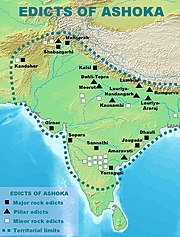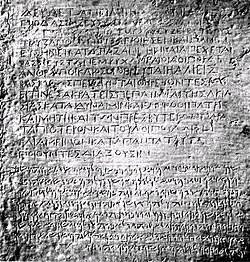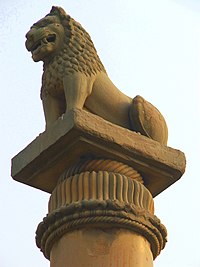Free Online FOOD for MIND & HUNGER - DO GOOD 😊 PURIFY MIND.To live like free birds 🐦 🦢 🦅 grow fruits 🍍 🍊 🥑 🥭 🍇 🍌 🍎 🍉 🍒 🍑 🥝 vegetables 🥦 🥕 🥗 🥬 🥔 🍆 🥜 🎃 🫑 🍅🍜 🧅 🍄 🍝 🥗 🥒 🌽 🍏 🫑 🌳 🍓 🍊 🥥 🌵 🍈 🌰 🇧🇧 🫐 🍅 🍐 🫒Plants 🌱in pots 🪴 along with Meditative Mindful Swimming 🏊♂️ to Attain NIBBĀNA the Eternal Bliss.
Kushinara NIBBĀNA Bhumi Pagoda White Home, Puniya Bhumi Bengaluru, Prabuddha Bharat International.
05/07/22
Filed under: General, Theravada Tipitaka , Plant raw Vegan Broccoli, peppers, cucumbers, carrots
Posted by: site admin @ 8:39 pm
Posted by: site admin @ 8:39 pm
𝓛𝓔𝓢𝓢𝓞𝓝 4428 Mon 9 May 2022
Ashoka: Empire
EACH MORNING WE ARE
BORN AGAIN. WHAT WE
DO TODAY IS WHAT
MATTERS MOST
The best way to celebrate Mother’s Day is to Grow your own food 

 like
like  vegetables
vegetables 

 & fruit
& fruit

 plants like Mauryan Emperor Ashoka and
plants like Mauryan Emperor Ashoka and  in pots
in pots  to be free birds
to be free birds 

 & swim to be healthy.
& swim to be healthy.




Ashoka: Empire
Apart
from a few mentions in some Buddhist texts, Ashoka’s great empire was
all but forgotten, until in 1837 a young British administrator in
Calcutta managed decipher engravings on a range of mysterious stone
pillars that were scattered around India. These monumental stone pillars
were up to 80ft high, and some were found thousands of miles apart. In
what was the first example of writing in Indian history, the British
administrator discovered that the pillars were inscribed with advice
from Ashoka, on how to live a good life and with examples of what
Ashoka had achieved across his empire. These statements, or edicts, were
inscribed both on the stone pillars and also on large rocks, all across
the empire, in several different languages – even Greek.
from a few mentions in some Buddhist texts, Ashoka’s great empire was
all but forgotten, until in 1837 a young British administrator in
Calcutta managed decipher engravings on a range of mysterious stone
pillars that were scattered around India. These monumental stone pillars
were up to 80ft high, and some were found thousands of miles apart. In
what was the first example of writing in Indian history, the British
administrator discovered that the pillars were inscribed with advice
from Ashoka, on how to live a good life and with examples of what
Ashoka had achieved across his empire. These statements, or edicts, were
inscribed both on the stone pillars and also on large rocks, all across
the empire, in several different languages – even Greek.
The
pillars revealed clear evidence that this great ruler’s empire was not
due to vast armies and battles, but welfare. They provide evidence that
the king was the first (and only) whose conquest was not by force but by
the value of ideas and the welfare of the empire’s citizens – and the
cornerstone of this scheme to improve people’s lives was by planting
roadside trees.
pillars revealed clear evidence that this great ruler’s empire was not
due to vast armies and battles, but welfare. They provide evidence that
the king was the first (and only) whose conquest was not by force but by
the value of ideas and the welfare of the empire’s citizens – and the
cornerstone of this scheme to improve people’s lives was by planting
roadside trees.
Listed second on the list of 14 statements, or edicts, written on the monumental stones was:
“Along roads I have had wells dug and trees planted for the benefit of humans and animals”.
“Along
roads I have had banyan trees planted so that they can give shade to
animals and men, and I have had mango groves planted.”
roads I have had banyan trees planted so that they can give shade to
animals and men, and I have had mango groves planted.”
It
is believed that state funds were used for the tree planting programme
along the roads, and to ensure that the projects were carried out
correctly, Ashoka would go on frequent tree inspection tours and he
expected his district officers to follow his example.
is believed that state funds were used for the tree planting programme
along the roads, and to ensure that the projects were carried out
correctly, Ashoka would go on frequent tree inspection tours and he
expected his district officers to follow his example.
Today
it is unlikely that many, if any, trees from this time remain, to
confirm the scale of the tree planting. However, to have gone to the
trouble and expense of the stone pillars, and for tree planting to form a
key headline on them, we can reliably confer that roadside trees were a
key policy of the empire and that the level of the tree planting was
substantial. To give some comparison, this would be akin to modern
political parties putting street tree planting above policy pledges on
health services, the economy, education and housing. Likewise, it is
reasonable to assume the street trees must have been welcomed and would
have formed a highly valued aspect of citizens lives.
it is unlikely that many, if any, trees from this time remain, to
confirm the scale of the tree planting. However, to have gone to the
trouble and expense of the stone pillars, and for tree planting to form a
key headline on them, we can reliably confer that roadside trees were a
key policy of the empire and that the level of the tree planting was
substantial. To give some comparison, this would be akin to modern
political parties putting street tree planting above policy pledges on
health services, the economy, education and housing. Likewise, it is
reasonable to assume the street trees must have been welcomed and would
have formed a highly valued aspect of citizens lives.
A
street tree is defined as a tree located next to or within a public
road. They provide a wide range of social, environmental and economic
benefits and managing them is a major undertaking and cost for local
authorities, with much political debate relating to their presence and
management. The definition of urban forestry involves the planned,
systematic and integrated management of these trees. Although we
wouldn’t easily recognise this environment as ‘urban’ by today’s
standards, these definitions perfectly fit what was undertaken over 2000
years ago. As well as his other achievements, Ashoka has to be credited
as developing arboriculture in India, he was the first, and possibly
only, person to devise and implement an empire-wide roadside tree
planting policy.
street tree is defined as a tree located next to or within a public
road. They provide a wide range of social, environmental and economic
benefits and managing them is a major undertaking and cost for local
authorities, with much political debate relating to their presence and
management. The definition of urban forestry involves the planned,
systematic and integrated management of these trees. Although we
wouldn’t easily recognise this environment as ‘urban’ by today’s
standards, these definitions perfectly fit what was undertaken over 2000
years ago. As well as his other achievements, Ashoka has to be credited
as developing arboriculture in India, he was the first, and possibly
only, person to devise and implement an empire-wide roadside tree
planting policy.
Ashoka
(/əˈʃoʊkə/; Brahmi: 𑀅𑀲𑁄𑀓, Asoka, IAST: Aśoka), also known as Ashoka
the Great, was an Indian emperor of the Maurya Dynasty, son of
Bindusara, who ruled almost all of the Indian subcontinent from c. 268
to 232 BCE. Ashoka promoted the spread of Buddhism across ancient Asia.
Considered by many to be one of India’s greatest emperors, Ashoka
expanded Chandragupta’s empire to reign over territory stretching from
present-day Afghanistan in the west to present-day Bangladesh in the
east. It covered the entire Indian subcontinent except for parts of
present-day Tamil Nadu. The empire’s capital was Pataliputra (in
Magadha, present-day Patna), with provincial capitals at Takshashila
(later Taxila) and Ujjain. Ashoka, after the war of Kalinga, got upset
with the bloodshed and vowed to never fight again. He patronized
Buddhism during his reign.
(/əˈʃoʊkə/; Brahmi: 𑀅𑀲𑁄𑀓, Asoka, IAST: Aśoka), also known as Ashoka
the Great, was an Indian emperor of the Maurya Dynasty, son of
Bindusara, who ruled almost all of the Indian subcontinent from c. 268
to 232 BCE. Ashoka promoted the spread of Buddhism across ancient Asia.
Considered by many to be one of India’s greatest emperors, Ashoka
expanded Chandragupta’s empire to reign over territory stretching from
present-day Afghanistan in the west to present-day Bangladesh in the
east. It covered the entire Indian subcontinent except for parts of
present-day Tamil Nadu. The empire’s capital was Pataliputra (in
Magadha, present-day Patna), with provincial capitals at Takshashila
(later Taxila) and Ujjain. Ashoka, after the war of Kalinga, got upset
with the bloodshed and vowed to never fight again. He patronized
Buddhism during his reign.
Ashoka
waged a particularly destructive war against the state of Kalinga
(modern Odisha), which he conquered in about 260 BCE. According to an
interpretation of his Edicts, he converted to Buddhism after witnessing
the mass deaths of the Kalinga War, which he had waged out of a desire
for conquest and which reportedly directly resulted in more than 100,000
deaths and 150,000 deportations.He is remembered for erecting the
Ashoka pillars and spreading his Edicts,for sending Buddhist monks to
Sri Lanka and Central Asia,and for establishing monuments marking
several significant sites in the life of Gautama Buddha.
waged a particularly destructive war against the state of Kalinga
(modern Odisha), which he conquered in about 260 BCE. According to an
interpretation of his Edicts, he converted to Buddhism after witnessing
the mass deaths of the Kalinga War, which he had waged out of a desire
for conquest and which reportedly directly resulted in more than 100,000
deaths and 150,000 deportations.He is remembered for erecting the
Ashoka pillars and spreading his Edicts,for sending Buddhist monks to
Sri Lanka and Central Asia,and for establishing monuments marking
several significant sites in the life of Gautama Buddha.
Beyond
the Edicts of Ashoka, biographical information about him relies on
legends written centuries later, such as the 2nd-century CE Ashokavadana
(”Narrative of Ashoka”, a part of the Divyavadana), and in the Sri
Lankan text Mahavamsa (”Great Chronicle”). The emblem of the modern
Republic of India is an adaptation of the Lion Capital of Ashoka. His
Sanskrit name “Aśoka” means “painless, without sorrow” (the a privativum
and śoka, “pain, distress”). In his edicts, he is referred to as
Devānāmpriya (Pali Devānaṃpiya or “the Beloved of the Gods”), and
Priyadarśin or Priyadarshi (Pali Piyadasī or “He who regards everyone
with affection”). His fondness for a tree is the reason for his name
being connected to the “Ashoka tree” or Saraca asoca, and this is
referenced in the Ashokavadana.
the Edicts of Ashoka, biographical information about him relies on
legends written centuries later, such as the 2nd-century CE Ashokavadana
(”Narrative of Ashoka”, a part of the Divyavadana), and in the Sri
Lankan text Mahavamsa (”Great Chronicle”). The emblem of the modern
Republic of India is an adaptation of the Lion Capital of Ashoka. His
Sanskrit name “Aśoka” means “painless, without sorrow” (the a privativum
and śoka, “pain, distress”). In his edicts, he is referred to as
Devānāmpriya (Pali Devānaṃpiya or “the Beloved of the Gods”), and
Priyadarśin or Priyadarshi (Pali Piyadasī or “He who regards everyone
with affection”). His fondness for a tree is the reason for his name
being connected to the “Ashoka tree” or Saraca asoca, and this is
referenced in the Ashokavadana.
In
The Outline of History (1920), H.G. Wells wrote, “Amidst the tens of
thousands of names of monarchs that crowd the columns of history, their
majesties and graciousnesses and serenities and royal highnesses and the
like, the name of Ashoka shines, and shines, almost alone, a star.”
The Outline of History (1920), H.G. Wells wrote, “Amidst the tens of
thousands of names of monarchs that crowd the columns of history, their
majesties and graciousnesses and serenities and royal highnesses and the
like, the name of Ashoka shines, and shines, almost alone, a star.”
Grow vegetables 

 and fruit
and fruit 

 plants in pots to overcome hunger the worst kind of illness as said by the Awakened One. Like Ashoka the Great plant fruit
plants in pots to overcome hunger the worst kind of illness as said by the Awakened One. Like Ashoka the Great plant fruit  bearing trees
bearing trees 
 all over the world
all over the world 

Ashoka
(/əˈʃoʊkə/; Brahmi: 𑀅𑀲𑁄𑀓, Asoka,[5] IAST: Aśoka), also known as
Ashoka the Great, was an Indian emperor of the Maurya Dynasty, son of
Bindusara, who ruled almost all of the Indian subcontinent from c. 268
to 232 BCE.[6][7] Ashoka promoted the spread of Buddhism across
anci…..
(/əˈʃoʊkə/; Brahmi: 𑀅𑀲𑁄𑀓, Asoka,[5] IAST: Aśoka), also known as
Ashoka the Great, was an Indian emperor of the Maurya Dynasty, son of
Bindusara, who ruled almost all of the Indian subcontinent from c. 268
to 232 BCE.[6][7] Ashoka promoted the spread of Buddhism across
anci…..
It
is commonly believed that street trees originated in the capital cities
of Europe in the 1500s. First in France, then Holland and then to
London and the rest of the continent. This European history of street
trees is rightly uncontested. However, there is compelling evidence of a
vast network of managed street trees, from over 2000 years ago. A
massive programme of tree planting and arboricultural management along
routes over many thousands of miles across India and South Asia. A
scheme that would surpass even the most ambitious of today’s tree
planting projects and one that can lay claim to the practice of
arboriculture beginning in India, over 1500 years before the first trees
were planted on the streets of Europe.
is commonly believed that street trees originated in the capital cities
of Europe in the 1500s. First in France, then Holland and then to
London and the rest of the continent. This European history of street
trees is rightly uncontested. However, there is compelling evidence of a
vast network of managed street trees, from over 2000 years ago. A
massive programme of tree planting and arboricultural management along
routes over many thousands of miles across India and South Asia. A
scheme that would surpass even the most ambitious of today’s tree
planting projects and one that can lay claim to the practice of
arboriculture beginning in India, over 1500 years before the first trees
were planted on the streets of Europe.
Ashoka
the Great reigned from 269 BC to 232 BC. He was the third emperor of
the Maurya dynasty and is now considered ancient India’s greatest ruler
and the key figure in spreading Buddhism across the globe. At the
greatest extent, his empire expanded into India’s central and southern
regions, along the Himalayas to the north, into Assam to the east, and
to the west into what is now Afghanistan, with his influence reaching as
far as Greece and North Africa.
the Great reigned from 269 BC to 232 BC. He was the third emperor of
the Maurya dynasty and is now considered ancient India’s greatest ruler
and the key figure in spreading Buddhism across the globe. At the
greatest extent, his empire expanded into India’s central and southern
regions, along the Himalayas to the north, into Assam to the east, and
to the west into what is now Afghanistan, with his influence reaching as
far as Greece and North Africa.

Ashoka Maurya

The Sanchi stupa in Sanchi, Madhya Pradesh established by emperor Ashoka in the third century BC.
The Ashoka Chakra, featured on the flag of the Republic of India



Silver punch-mark coins of the Mauryan empire, bear Buddhist symbols such as the Dharmacakra,
the elephant (previous form of the Buddha), the tree under which
AWAKenment happened, and the burial mound where the Buddha died
(obverse). 3rd century BC
the elephant (previous form of the Buddha), the tree under which
AWAKenment happened, and the burial mound where the Buddha died
(obverse). 3rd century BC

Distribution of the Edicts of Ashoka and Ashokan territorial limits.
Greek Late Archaic style capital from Patna (Pataliputra), thought to correspond to the reign of Ashoka, 3rd century BC, Patna Museum (click image for references).

Bilingual edict (Greek and Aramaic) by king Ashoka, from Kandahar - Afghan National Museum.. (Click image for translation) .
Buddhist proselytism at the time of king Ashoka (260
“The legend of King Asoka, A study and translation of the Asokavadana“, John Strong, Princeton Library of Asian translations.
Ashoka’s Major Rock Edict inscription at Girnar

This is the famous original sandstone sculpted Lion Capital of Ashoka preserved at Sarnath Museum which was originally erected around 250 BCE atop an Ashoka Pillar at Sarnath. The angle from which this picture has been taken, minus the inverted bell-shaped lotus flower, has been adopted as the National Emblem of India showing the Horse on the left and the Bull on the right of the Ashoka Chakra in the circular base on which the four Indian lions
are standing back to back. On the far side there is an Elephant and a
Lion instead. The wheel “Ashoka Chakra” from its base has been placed
onto the center of the National Flag of India.
are standing back to back. On the far side there is an Elephant and a
Lion instead. The wheel “Ashoka Chakra” from its base has been placed
onto the center of the National Flag of India.




